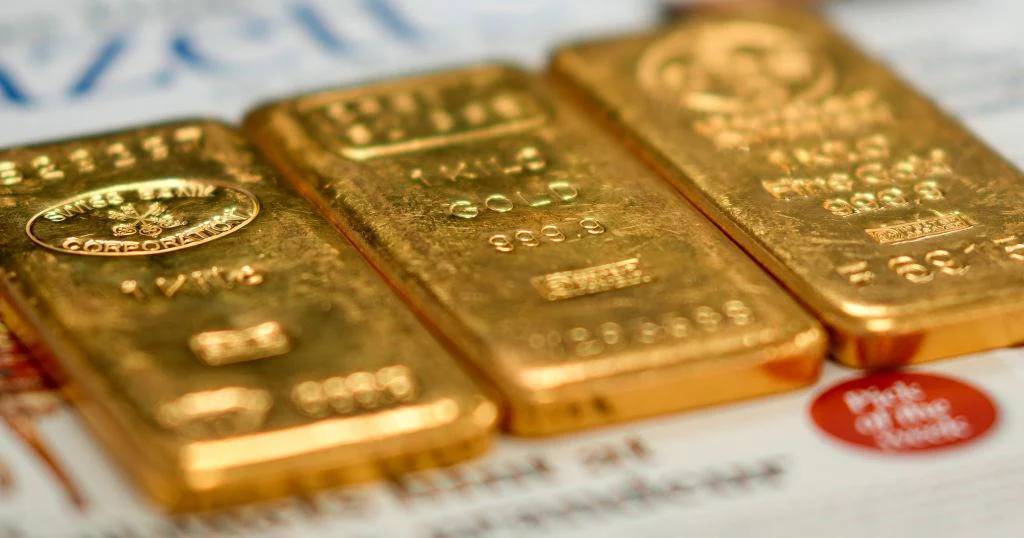By By Luke Delorme,Christopher Furlong — Getty Images
Copyright berkshireeagle

On Sept. 2, gold set a new all-time high, climbing above $3,500 per ounce. This price is noteworthy because it represents a 100-fold increase since President Nixon officially ended the convertibility of the U.S. dollar into gold in 1971, when gold was pegged at $35 per ounce.
Gold has been prized as money and as a store of value for thousands of years, from Egyptian traders in 3,000 B.C. to the first gold coins in Turkey around 600 B.C., and later as a standard that anchored currencies in the 19th century. More recently, gold has become an investment vehicle. Gold is often seen as a safe haven, somewhere people can park their money when other assets may be losing value.
One reason gold has become easily investable is the advent of the exchange-traded fund (ETF). The first gold ETF (SPDR Gold Shares ETF) was introduced in late 2004 by State Street Global Advisors, and several have since followed. These ETFs represent fractional ownership of gold and aim to track the underlying price of gold.
Most of these gold ETFs hold actual gold bars in secure vaults. Gold ETFs do charge a small expense ratio that will reduce the long-term investment return, but these fees are typically low.
Gold ETFs can be bought and sold in investment accounts such as traditional and Roth IRAs and brokerage accounts. You don’t have to deal with the hassle of trying to buy, sell, and store gold bars.
When the first gold ETF was launched, the gold price was about $444 per ounce. Since that ETF’s launch, its total cumulative return has been more than 630 percent. During that period, gold returns have nearly kept pace with the S&P 500 including dividends, which has returned almost 700 percent.
That would be remarkable even if stocks had done poorly, but they have not. The S&P 500 represents ownership in the most successful and profitable U.S. businesses.
Gold does not provide a dividend, offer profit margins, or create shareholder value. Although gold has some practical applications, it is largely still a store of value and an investment vehicle. And yet it has grown nearly as fast as the stock market during this period.
People were able to easily start holding gold as a share of their investment portfolios because of these ETFs. Even if people chose to allocate only a small percentage of their portfolios to gold, this change in investor accessibility opened the floodgates for new demand, as millions of investors could suddenly own gold with the click of a button.
Gold prices have historically performed well during periods of uncertainty and financial disruption. For example, gold prices rose by more than 36 percent over the course of 2007 and 2008 amid the depths of the financial crisis (albeit with some big swings up and down).
Gold similarly performed well during the early stages of the COVID crisis, while stocks were falling. Many people view gold as a hedge against financial uncertainty due to its historical track record.
While there has been ongoing uncertainty in the last several years, the impetus for gold’s recent increase may be more closely related to de-globalization and the shift away from the U.S. dollar.
The dollar has long been a global currency reserve. It is estimated that nearly 90 percent of all global currency transactions involve the U.S. dollar.
Some countries and investors may be seeking alternatives to the U.S. dollar, especially given more protectionist trade policies. This trend that could be fueling gold’s resurgence.
China’s central bank in particular has been actively and continuously buying gold as one way to reduce its dependence on the U.S. dollar. Recent estimates put China’s gold reserves somewhere around $240 billion and growing.
There are a host of other possible explanations for why gold prices have done well, including low interest rates, inflation, and excess liquidity in the financial system. It’s impossible to know the exact reasons why gold has rallied, as every investor has his or her own rationale for buying gold. The question now is whether it warrants a place in a diversified portfolio.
I believe that gold can be a useful portfolio diversifier that has the potential to help during periods of financial disruption. For this reason alone, it can be a valuable tool in portfolio management. Owning gold bars or coins is impractical for most people, but gold ETFs offer an easy solution.
I also believe that the trend toward global de-dollarization shows no signs of slowing. Central banks in countries such as India and China continue to buy gold.
The momentum in the price of gold is clearly positive, and geopolitical risks remain heightened. While it’s impossible to predict where it goes from here, it seems rational that the price of gold has risen as much as it has.
Gold may not replace stocks or bonds, but in a world of shifting global dynamics, it remains a timeless diversifier.



